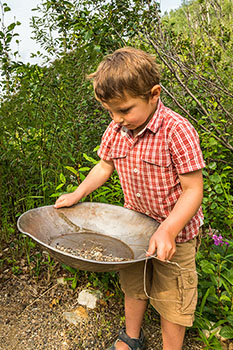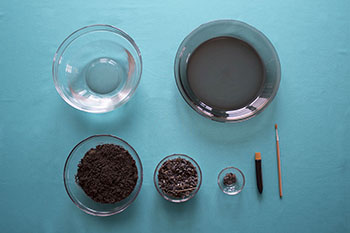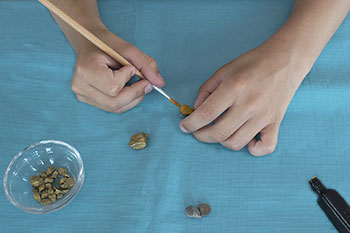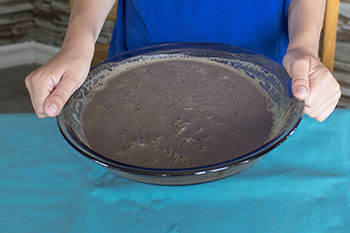
Small Prospectors in Search of Gold
By Jenna Roebuck, Klondike National Historic Sites, YT

When word got around of a gold deposit in Bonanza Creek, near Dawson City, Yukon, the dream of becoming a prospector spread like wildfire. Before long, thousands of people had flocked to the area with visions of gold in their head, effectively triggering the Klondike Gold Rush.
The site of this original discovery, known today as Discovery Claim National Historic Site (one of the Klondike National Historic Sites), was subject to heavy mining for years, ever since its founding in 1896. Although some believed that the area was an infinite gold mine, the mineral deposits were eventually exhausted, and the golden frenzy began to quiet down. Only a few hopeful prospectors continue to look for gold here today.
As a way to tie in with this event in history, here's a hands-on activity that will get the whole family “panning for gold”. The method presented here is inspired by the traditional technique, which consists of collecting water and sediments (gravel, sand, etc.) from the bottom of a river with a pan (a large, shallow, circular bowl) and moving it in a small circular motion. The heavier sediment (like gold!) will stay at the bottom of the pan, while the lighter sediment will spill over the sides.
If you don’t happen to have a stream nearby, don’t worry – this activity was designed to do in the comfort of your own home!
Shall we see if there are any prospective little prospectors in the house? Let’s get cracking!

What you will need
- A shallow bowl (to make a pan similar to the picture above)
- Water
- Rocks of various sizes, sand, and other easy-to-find sediments
- Gold paint
- A small paintbrush
- A plastic tablecloth
- A large plastic container (optional but highly recommended)


Instructions
- Drape a plastic tablecloth over the work surface. This step will make cleaning easier once the activity is over.
- Take some of the small rocks you found and paint them gold with a small paintbrush
- Let them dry according to the instructions on the paint container.
- Once your gold “nuggets” have dried, place them along with the rest of the sediment and sand in your shallow bowl.
- Add water
- Mix the contents up so that the water becomes cloudy or dirty and you cannot see the golden rocks.
- Start “panning” with your shallow bowl by making small circular movements to stir the mixture. Work over a large plastic container as water and the lighter sediments may spill over the sides.
- Try to find all of your gold, just like real prospectors back in the day! Feeling rich yet?
Download this activity (PDF, 629 KB)
- Date modified :